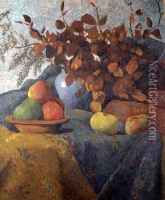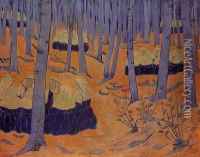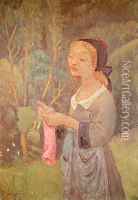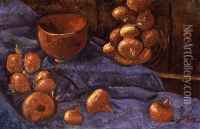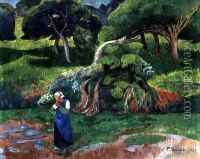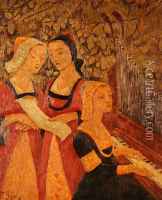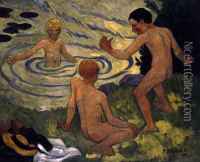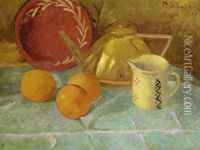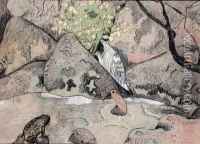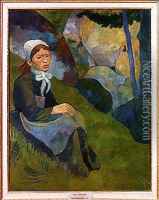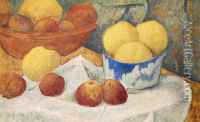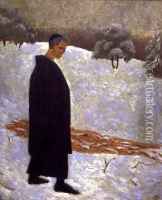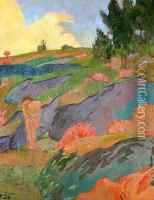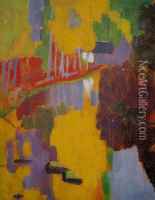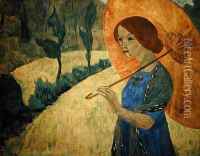Paul Serusier Paintings
Paul Sérusier was a French painter and a figurehead of the group of artists known as Les Nabis. Born in Paris on November 9, 1864, Sérusier was initially a student at the Académie Julian where he met Maurice Denis, Pierre Bonnard, and other future members of the Nabis. He was profoundly influenced by a trip to Pont-Aven in 1888, where he met Paul Gauguin. Gauguin's use of color and symbolic, non-naturalistic representation had a significant impact on Sérusier's artistic development.
During his time in Pont-Aven, Sérusier painted what would become an iconic work known as 'The Talisman' under the guidance of Gauguin. This small landscape on wood, using a cloisonnist style, encapsulated the Nabis' approach to art, emphasizing flat areas of bold color and simplified shapes. It was not intended to represent the natural world realistically but to evoke emotion and was considered by the group as a touchstone for their artistic principles.
Sérusier's role as a theorist and mentor to the Nabis was significant. He shared his knowledge and Gauguin's teachings with the group upon returning to Paris. The Nabis, which included artists like Édouard Vuillard and Félix Vallotton, alongside those he met at Académie Julian, aimed to break away from the traditional approaches of the art establishment by focusing on the symbolic content of their work and the use of color to express emotion.
Throughout his career, Sérusier oscillated between traditional and avant-garde styles, and his work varied from naturalistic landscapes to more abstract compositions. He continued to paint, write, and teach, spreading the ideas of the Nabis and influencing the development of modern art. Sérusier remained an important figure in the group until its dissolution in 1900, after which he continued to paint and exhibited regularly.
Later in life, Sérusier also became interested in religious symbolism and the occult, which is reflected in some of his later works. He passed away on October 7, 1927, leaving behind a legacy that significantly contributed to the transition from Impressionism to the abstract and expressive movements of the 20th century.
